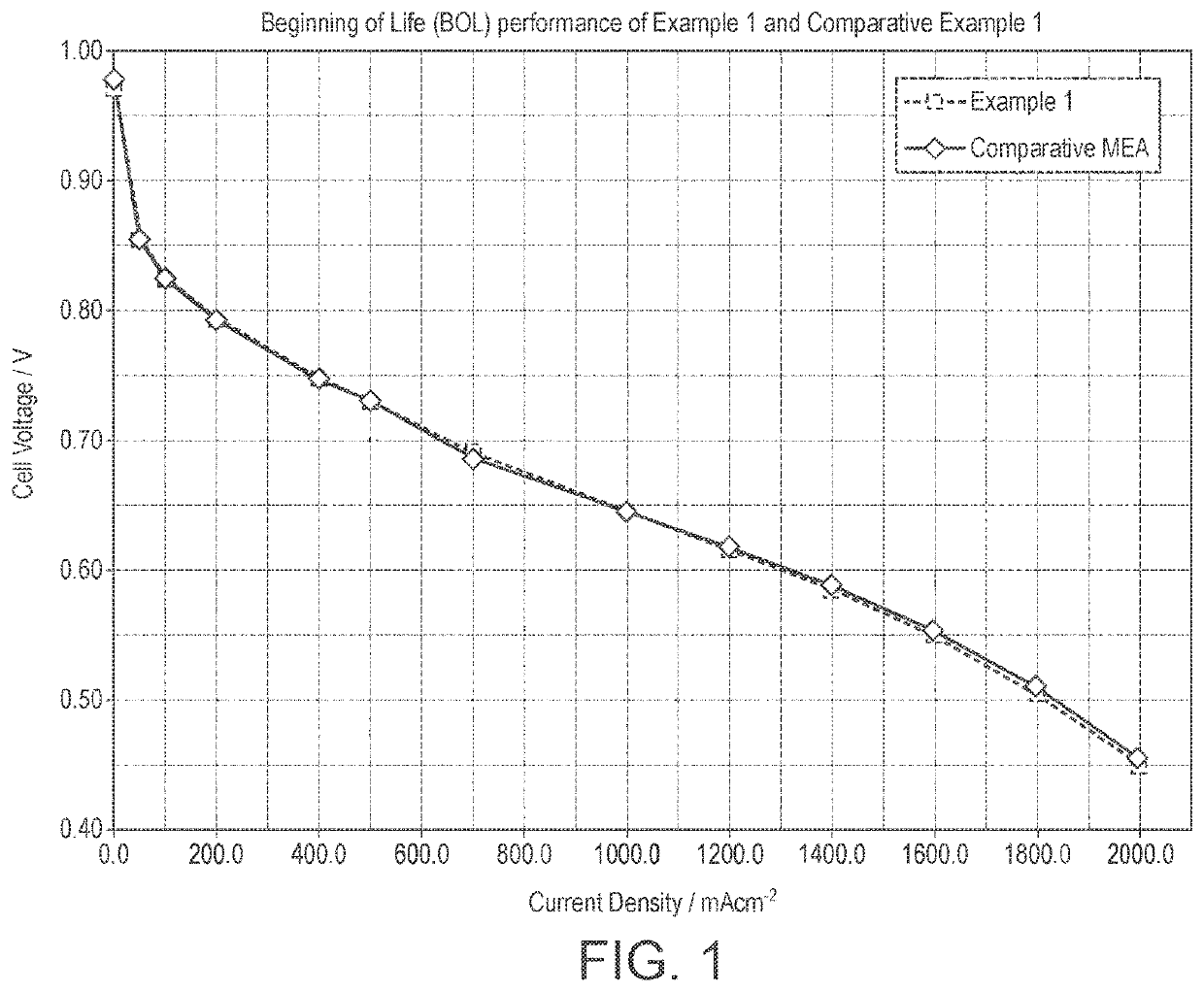Catalyst layer
a catalyst layer and electrode layer technology, applied in the field of catalyst layers, can solve the problems of high electrochemical potential, damage to the catalyst layer/electrode structure, detrimental to the performance of fuel cell components, etc., and achieve the effects of stable catalyst layer, low platinum loading, and high performan
- Summary
- Abstract
- Description
- Claims
- Application Information
AI Technical Summary
Benefits of technology
Problems solved by technology
Method used
Image
Examples
example 1
[0088]An anode catalyst ink was prepared by mixing an unsupported platinum black catalyst (Johnson Matthey, HiSPEC 1000) with an aqueous dispersion of a perfluorosulphonic acid ionomer of equivalent weight 790 (Solvay Plastics, D79-25BS Dispersion) at a level of 16 wt % ionomer relative to the weight of platinum. The aqueous solution had a total solids content of 45%. The platinum black powder was added to the diluted ionomer dispersion at 65° C. with stirring. This dispersion was mixed using a high shear mixer to ensure the components were evenly dispersed before processing through a bead mill, to reduce the particle size of the Pt catalyst. An oxygen evolution catalyst (Johnson Matthey, IrO2 / TaO2 prepared as described in WO2011 / 021034) was added to the diluted ink to achieve a ratio by weight of 1.0:1.26 Pt:IrO2 / TaO2. The catalyst was gently stirred into the ink to ensure even distribution. After processing the ink was diluted with neat propan-1-ol to 35% total solids (propanol co...
PUM
| Property | Measurement | Unit |
|---|---|---|
| thickness | aaaaa | aaaaa |
| thickness | aaaaa | aaaaa |
| particle size | aaaaa | aaaaa |
Abstract
Description
Claims
Application Information
 Login to View More
Login to View More - R&D
- Intellectual Property
- Life Sciences
- Materials
- Tech Scout
- Unparalleled Data Quality
- Higher Quality Content
- 60% Fewer Hallucinations
Browse by: Latest US Patents, China's latest patents, Technical Efficacy Thesaurus, Application Domain, Technology Topic, Popular Technical Reports.
© 2025 PatSnap. All rights reserved.Legal|Privacy policy|Modern Slavery Act Transparency Statement|Sitemap|About US| Contact US: help@patsnap.com


